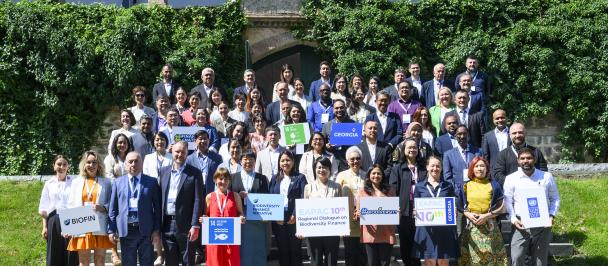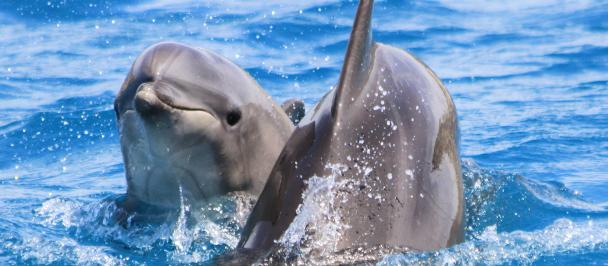Sustainable pastures management makes the lives of Tush shepherds more stable and secure
Sheep, grass and water
May 13, 2018
Shepherds of Tusheti, a mountainous region in the heart of the Caucasus, can hardly explain the climate change. They can do better than that – show you how it works as they feel its effects every day.
“The weather has changed. It is drier and windier than it used to be. Drought and high temperature mainly starts in April. Water is what we need here the most,“ says Avto Kavtarashvili, one of the 500 shepherds who seasonally bring flocks of sheep down to the Vashlovani pastures for winter grazing.
Highlights
- 500 shepherds bring flocks of sheep to the Vashlovani Protected Areas for winter grazing.
- 20% of pastures are in a poor condition and the problem can go wider with a combination of climate change and human use.
Each day Avto hits to the pastures early in the morning. Lambing time is when a real team work starts: “We all work together, boil in the same pot. That’s a life of a shepherd.”
Sheep are the main source of living for shepherds and flock owners. Their present and future depend on an income from sheep breeding, wool and cheese. But search for water and grass turns into a greater challenge. With less rain and expanding deserts, the famous pastures of Vashlovani are losing their productive soil, unique vegetation and wildlife.
“Our life revolves around grass and water. If there’s no grass, there’s no sheep. If there’s no water, there’s no sheep either,“ says Otar Pareulidze, sheep flock owner.
Vashlovani is one of the most unique Protected Areas in Georgia, and seasonal livestock grazing plays a big role in shaping an ecological mosaic of the park.
“Sheep is important for an environmental balance. Wild nature and a man coexist here and create this unique ecosystem together,” notes Vazha Cherkezishvili from the administration of the Protected Areas.
Vazha has been working in Vashlovani for the past 25 years. Lately, he is noticing that dry seasons become longer and wet seasons start later: “Some of the vegetation does not exist here anymore. Desertification causes degradation of the pastures and negatively affects sheep and shepherds.”
20 percent of pastures are in a poor condition and the problem can go wider, according to the European Union and UNDP. Environmental experts fear that, with a combination of climate change pressures and human use, soon the Vashlovani Park may lose proper grassland. To add up to the problem, no unified policy exists to regulate pasture management and maintenance.
A shepherd of Vashlovani. Photo: Antonio di Vico/UNDP
“Modern practices of pasture management can offer Vashlovani a way out. This can include rotational grazing and weather monitoring to allow sheep owners to effectively use natural resources,” says Tornike Phulariani from UNDP.
Highlights
- 4,000 ha of the degraded land are being rehabilitated with assistance of the European Union and UNDP.
- 300 km long migratory route is coming back to life by 2017.
- Watering points, each 30 metres long and of 3.5 tons water storage, help organise sheep movement and release the pressure from the degraded land.
”In addition, there’s an obvious need to rehabilitate degraded land, renovate water supply system and shelters, improve the migration logistics.”
The European Union and UNDP work with the Ministry of Environmental Protection and Agriculture, and Agency for Protected Areas of Georgia to improve pasture management in Vashlovani and make the lives of Tush shepherds more stable and secure. The initiative is part of a bigger programme which runs in all countries of the Eastern Neighbourhood.
"Clima East assists national governments to mitigate and adapt to the climate change by introducing innovative practices of pasture management, which in turn improves the lives of the local residents," says Alvaro Ortega Aparicio from the Delegation of the European Union to Georgia.
4,000 hectares of the degraded land are now being rehabilitated and 300 hectares long migratory route is coming back to life by 2017 to reverse and stabilise the climate change effects. The additional watering points on the sheep migratory route, the most degraded part of the pastures, will assist to better organise sheep movement and release the pressure from the degraded land.
“Shepherds had to ferry their flocks 3-4 km down to the river as there were no other watering points. Now we are installing two new points, each 30 metres long and of 3.5 tons water storage,” says Tamaz Gogaladze, the engineer who looks after the construction works.
Sheep, grass and water of Vashlovani is the natural heritage of Georgia and a source of living for 500 families. For Otar, Avto and many others, the revival of the Protected Area means stable and secure livelihood that will allow them to enjoy the perks of being shepherds.

 Locations
Locations





